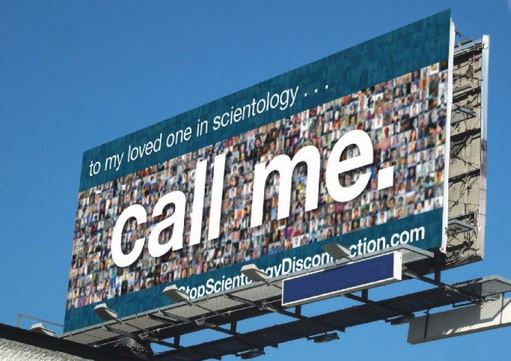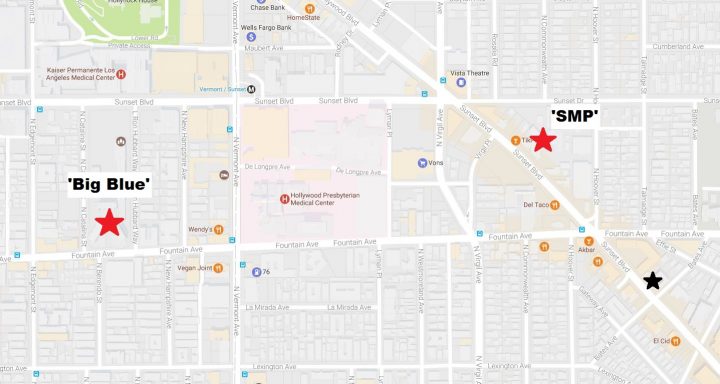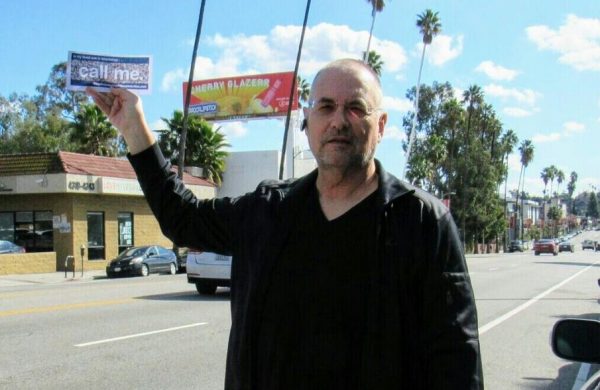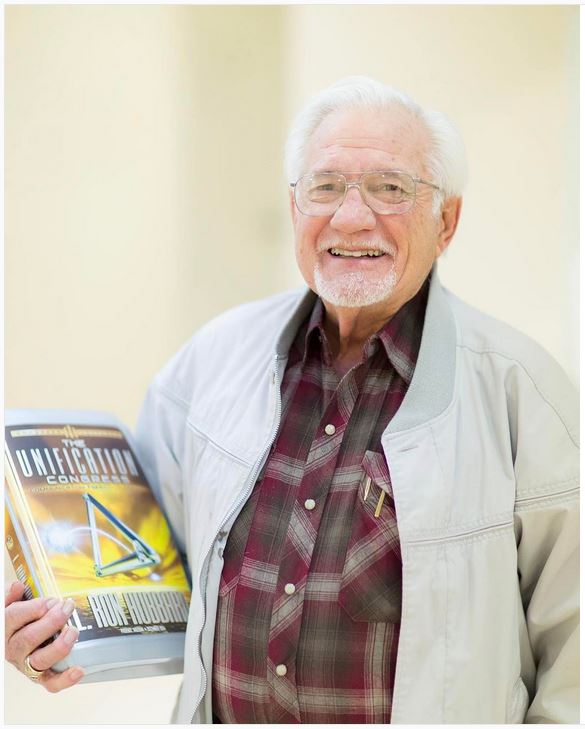It’s one of the things we’ve heard from people who watched Leah Remini’s A&E series Scientology and the Aftermath — what can I do about the abuses that Leah exposed on her show?
Well, here’s one thing you can do. Join Phil and Willie Jones as they dedicate their newest “Call Me” billboard bringing attention to Scientology’s toxic “disconnection” policy at 4301 Sunset Blvd, just a few blocks from Scientology’s own Los Angeles facilities.
Phil and Willie left Scientology several years ago, but their grown children Mike and Emily remain in Scientology’s “Sea Org” and have followed church orders to cut themselves off from their parents. Phil and Willie have been fighting back in numerous ways, including raising money for billboards that they’ve had put up in Los Angeles and Florida. The billboard has a positive message, asking Scientologists to call their loved ones and reconnect.
Phil and Willie expect the new billboard to appear on February 14 or 15. And now, they’ve set a date for their dedication event.
“We’re going to do our official billboard launch ‘gathering’ on Feb. 18. It’s a Saturday so that should make it easier for people to attend if they work during the week,,” Phil tells us. “There’s a coffee shop across the street and we can meet there at 10:30am. They have some outside seating there as well.”
Here’s another look at the map to help you find the billboard…
The location of the billboard, marked with a black star, is on Sunset just a little beyond Fountain Ave as you’re driving east. If you go, snap a few photos for us!
——————–
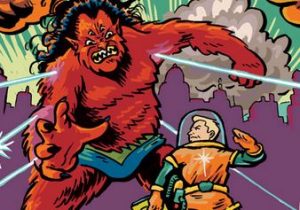 Hubbard’s fiction gets a healthy going over
Hubbard’s fiction gets a healthy going over
We highly recommend novelist Alec Nevala-Lee’s insightful essay at Longreads surveying L. Ron Hubbard’s pulp career, “Xenu’s paradox: The fiction of L. Ron Hubbard and the making of Scientology.”
Nevala-Lee isn’t the first to look into Hubbard’s life as a writer in order to understand how he managed to produce something as esoteric and durable as Dianetics and Scientology. We thought Susan Raine did an excellent job with her scholarly approach in 2014, showing how the tropes Hubbard used in his fiction ended up forming much of the furniture in the edifice that became his “church.”
But Nevala-Lee has produced one of the best examinations we’ve seen that not only explores Hubbard’s fiction but tries to understand how it reflected what was going on in Hubbard’s life at the time, and how his relationship with Astounding Science-Fiction editor John W. Campbell and the readers of that magazine helps us see how Scientology survived its infancy.
Some of the observations that Nevala-Lee makes about Hubbard and his fiction…
— Although Hubbard was most well known for his science fiction, it was probably his least favorite genre to write in.
— Hubbard built up his “science” of the mind (and later church) out of his science fiction because that’s where his fans were.
— As others have noticed, Hubbard’s stories generally show a lack of effort. Hubbard was a lazy creator.
— Nevala-Lee sees Campbell as someone who somewhat dominated Hubbard, helping push him to produce Dianetics.
Nevala-Lee pronounces most of Hubbard’s fiction to be forgettable, except for the titles that tend to be held up by fans as the ones where he showed real effort, such as Final Blackout and Fear.
This is a very good overview of Hubbard’s career, but it’s a shame the author didn’t see, apparently, our own contribution in this area. Thanks to Chuck Beatty, we examined a really remarkable 1940 short story by Hubbard, “One Was Stubborn,” which eerily predicts many of the central ideas of what would later become Dianetics and Scientology.
Ten years before he published Dianetics, in “One Was Stubborn,” Hubbard was imagining time travel, multiple lifetimes, affecting matter through sheer will, and even destructive cults that operate freely with government protection.
It’s pretty uncanny.
——————–
Have you seen these women?
A Hungarian ex-Scientologist is looking for his adopted daughters. They both joined the Sea Org around 10 to 12 years ago, while he was still in the Church. He lost contact with them 2 to 3 years ago when he was declared.
Names and latest known locations:
Júlia Bertók – CMO IXU (International Extension Unit), Los Angeles
Éva Bertók – CMO Europe, Copenhagen, Denmark
If you have any information about them, please drop us a line. (Our email address is listed at the bottom of every story here at the Bunker.)
——————–
Chris Shelton on ‘Scientology’
——————–
Bonus items from our tipsters
Here’s what this Sacramento granddad just bought, per Scientology’s own description of the Unification Congress (1954): “In these lectures, Mr. Hubbard not only defined the application of the Communication Formula in session, but as regards an individual’s communication with others, with himself, his body and the physical universe. Those discoveries thus embraced and clarified the mechanics of games and entrapment, why the physical universe persists, and even why a being has a Reactive Mind.”
Your proprietor finally caught up with Underground Bunker contributor Rod Keller at a midtown eatery. What a trip comparing notes — Rod’s been on the scene since the early 1990s, and he has an encyclopedic understanding of the field. What a night.
——————–
HowdyCon 2017: Denver, June 23-25. Go here to start making your plans.
——————–
 Posted by Tony Ortega on February 2, 2017 at 07:00
Posted by Tony Ortega on February 2, 2017 at 07:00
E-mail tips and story ideas to tonyo94 AT gmail DOT com or follow us on Twitter. We post behind-the-scenes updates at our Facebook author page. After every new story we send out an alert to our e-mail list and our FB page.
Our book, The Unbreakable Miss Lovely: How the Church of Scientology tried to destroy Paulette Cooper, is on sale at Amazon in paperback, Kindle, and audiobook versions. We’ve posted photographs of Paulette and scenes from her life at a separate location. Reader Sookie put together a complete index. More information about the book, and our 2015 book tour, can also be found at the book’s dedicated page.
The Best of the Underground Bunker, 1995-2016 Just starting out here? We’ve picked out the most important stories we’ve covered here at the Undergound Bunker (2012-2016), The Village Voice (2008-2012), New Times Los Angeles (1999-2002) and the Phoenix New Times (1995-1999)
Learn about Scientology with our numerous series with experts…
BLOGGING DIANETICS: We read Scientology’s founding text cover to cover with the help of L.A. attorney and former church member Vance Woodward
UP THE BRIDGE: Claire Headley and Bruce Hines train us as Scientologists
GETTING OUR ETHICS IN: Jefferson Hawkins explains Scientology’s system of justice
SCIENTOLOGY MYTHBUSTING: Historian Jon Atack discusses key Scientology concepts
Other links: Shelly Miscavige, ten years gone | The Lisa McPherson story told in real time | The Cathriona White stories | The Leah Remini ‘Knowledge Reports’ | Hear audio of a Scientology excommunication | Scientology’s little day care of horrors | Whatever happened to Steve Fishman? | Felony charges for Scientology’s drug rehab scam | Why Scientology digs bomb-proof vaults in the desert | PZ Myers reads L. Ron Hubbard’s “A History of Man” | Scientology’s Master Spies | Scientology’s Private Dancer | The mystery of the richest Scientologist and his wayward sons | Scientology’s shocking mistreatment of the mentally ill | Scientology boasts about assistance from Google | The Underground Bunker’s Official Theme Song | The Underground Bunker FAQ
Our Guide to Alex Gibney’s film ‘Going Clear,’ and our pages about its principal figures…
Jason Beghe | Tom DeVocht | Sara Goldberg | Paul Haggis | Mark “Marty” Rathbun | Mike Rinder | Spanky Taylor | Hana Whitfield





